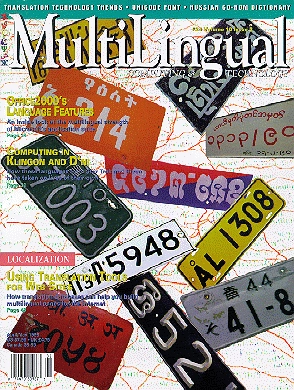Published 1998-08-11.
Time to read: 2 minutes.
Here an article I wrote which was published in the April/May 1999 issue of MultiLingual Computing:

Top 10 Internationalization Errors
- Assuming that all letters lie between a-z or A-Z. (For example, the Danish alphabet is abcdefghijklmnopqrstuvwxyzæøå.)
- Assuming that all languages only use one character to represent a letter. (Spanish uses ‘ch’ and ‘ll’ as two distinct letters – for example, ‘llama’ is pronounced ‘yama’, and collates between ‘loma’ and ‘mañana’.)
- Assuming that a letter only represents one character. (German sorts ‘ß’ as ‘ss’.)
- Assuming that all characters can be converted to upper or lower case. (Chinese, Japanese and Korean characters do not have the concept of case.)
- Assuming that words are separated by spaces. (Words in most Asian languages are not usually separated.)
- Assuming that sentences are read from left to right, then top to bottom. (Japanese is usually, but not always, written from top to bottom, then right to left.)
- Assuming that sentences are read in only one direction. (Arabic has a bi-directional writing system, in which sentences are mostly written from right to left, with the exception that numbers are written from left to right.)
- Assuming that there are twelve months in a year. (The Israelis have a thirteenth month every leap year, and their months have only 29 to 30 days.)
- Assuming that the year 1998 means the same thing to everyone. (India and Thailand's calendars number from Buddha's birth. Right now, in Japan, it is the year 10 Heisei; in Islamic countries it is the year 1418, and it is the year 5759 according to the Hebrew calendar.)
- Assuming that time zones are multiples of one hour apart. (Newfoundland, Canada, has a time zone which is half an hour different from the mainland, and Guyana's time zone is offset by 45 minutes from its neighbors.)














